Homemade Chinese Dumplings (Jiaozi 饺子) made two ways as pan-fried pot stickers and boiled little bundles of pork and vegetables, wrapped into a dumpling and dipped into a Chinese black vinegar sauce.
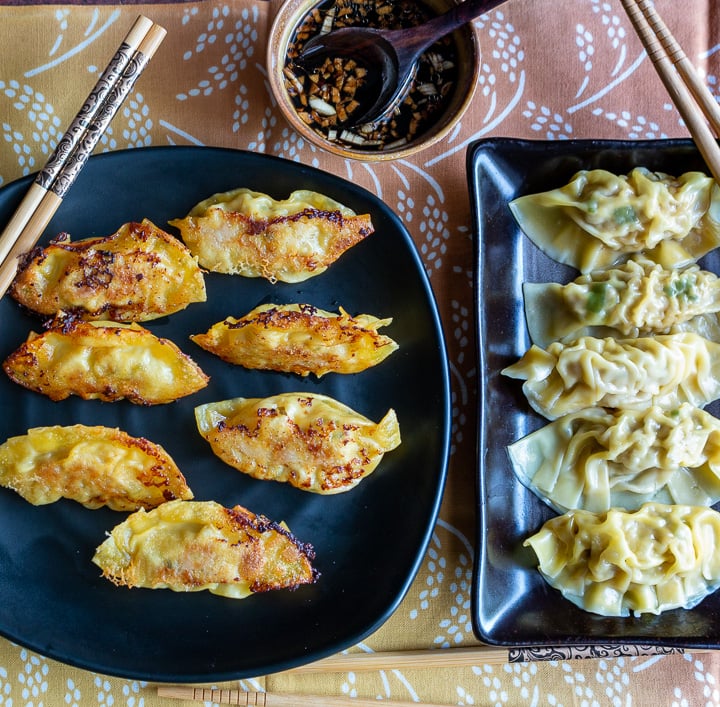
Time to make the dumplings!
Tender juicy fillings and succulent silky wrappers make these little savory treats the world’s best comfort food. One bite of that cozy jiao zi and you are going to be hooked. We bet you can’t eat just one. Come and join us today and learn how to make your own Chinese dumplings with easy step by step instructions and video for easy learning.
What makes our jiaozi recipe so different and interesting is that we use the Guangdong dim sum style wrappers for this recipe. This Chinese dumpling, which is also known as “gaau ji” in Cantonese, is made with a thin but tough wrapper that will not break. We have also used this Guangdong style wrapper in our Apple Pie Pot Stickers recipe for a fun Asian fusion spin on an autumn dessert.
Every family has its own preferred method of making Chinese dumplings with their favorite fillings. Of course, jiaozi types and preparation vary widely according to region. We will be discussing some of these regional differences and some simple hacks for making the best Chinese dumpling recipe.
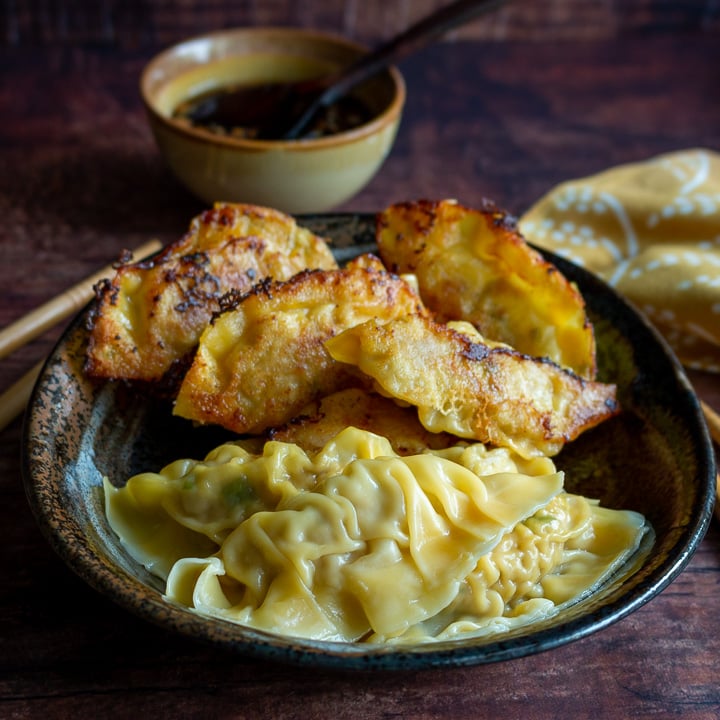
Why you are going to love Homemade Chinese Dumplings (Jiaozi 饺子)
- Delicious juicy tender fillings
- Delicate and light dumpling wrappers
- Cozy and warming
- Fun to make with friends
- Can be pan-fried as a pot sticker, boiled or steamed
- You can even add them to a soup or to our Spicy Sichuan Hot Pot.
- Amazing Chinese black vinegar dipping sauce
- Can be served as breakfast, lunch, dinner, dim sum or anything in between
- Must have recipe for the Chinese New Year celebration
- Vegan options available
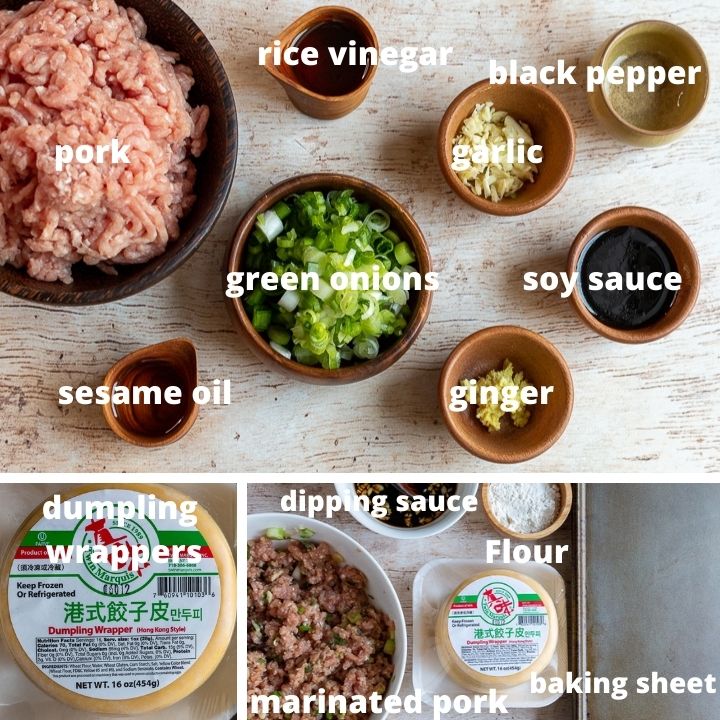
Homemade Chinese Dumplings Ingredients
Chinese Dumplings typically consist of a ground meat and/or vegetable filling wrapped into a thinly rolled piece of dough, which is then sealed by pressing the edges together or by crimping. The four basic components for this recipe are…
- Chinese dumpling wrappers
- Ground Meat Filling - Ground pork marinated with green onions, ginger, sesame oil, rice vinegar, white pepper and soy sauce.
- Vegetable Filling – celery, carrot, napa cabbage, tofu, green onions, garlic, soy sauce, rice vinegar and salt.
- Dipping Sauce – soy sauce, Chinese black vinegar (Chinkiang), garlic and sesame oil.
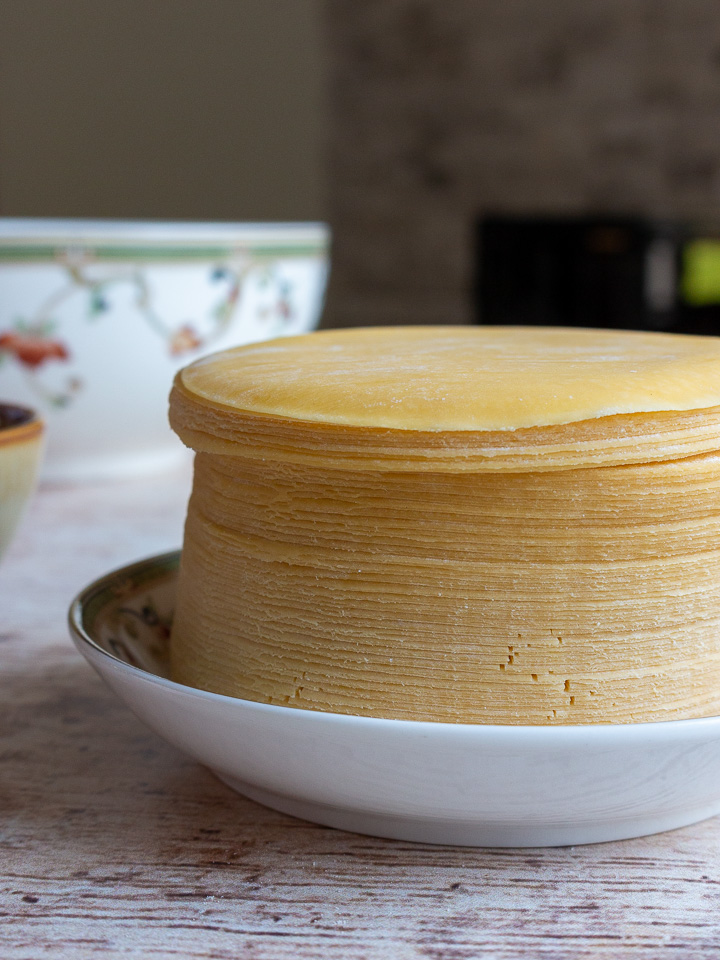
Types of Jiaozi Wrappers
There are several different types of dumpling wrappers on the market or you can make your own. We actually prefer the Hong Kong style dumpling wrappers as they are extra thin but sturdy and a little smaller in diameter compared to the traditional Northern or Shanghai style dumpling wrappers.
Using a store-bought wrapper really saves a lot of time. In addition, if you prefer a thinner wrapper buying the pre-made Hong Kong style wrapper is really delicious as it is very difficult to make this extra thin type from scratch.
- Shanghai Style Dumpling Wrappers
- Hong Kong Style Dumpling Wrappers
- Northern China Dumpling Wrappers
- Homemade Dumpling Wrappers – one of our favorite instructions on how to make homemade wrappers is from Healthy Nibbles and Bits.
How to Make a Gluten-Free Jiaozi Recipe
- Try these gluten-free dumpling wrappers
- Exchange of Chinese black vinegar of a ratio or 1:1 balsamic to rice vinegar
- Use tamari instead of soy sauce to stay gluten-free
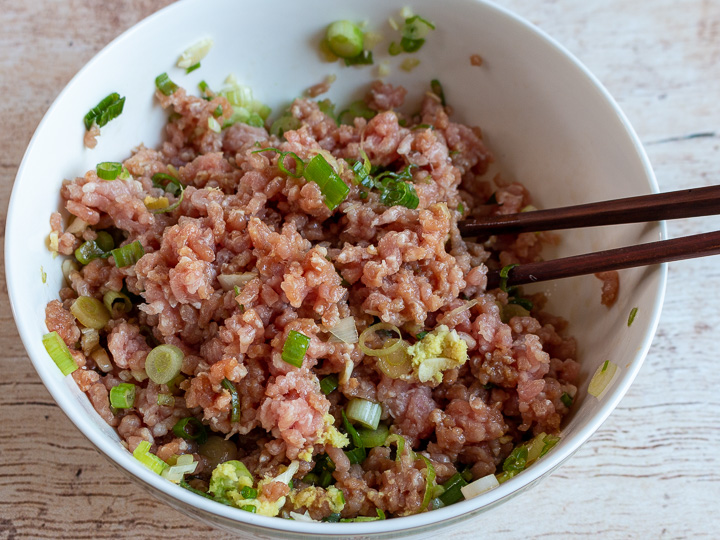
Jiaozi Fillings
How many dumplings do you think you can eat? We have watched our super skinny friends pack away 12-24 at one sitting. Really!!! The lesson learned here is always make more than you think you need.
You can fill your wrappers with just about anything your little heart desires. However, one of our favorite fillings is a simple pork filling marinated with soy sauce, garlic, ginger, green onions or garlic chives, rice vinegar and white pepper. The longer you let your pork marinate the better tasting your Asian dumplings will be. You can marinate your pork up to 24 hours in advance in the refrigerator.
We have found that you want around 20% - 25% fat and 80% - 75% lean pork mixture for the best Chinese dumpling recipe. If you go any leaner, your dumplings will be dry. No one likes a dry dumpling.
If you want to make a vegan jiaozi, be sure to try our vegetable filling recipe in the recipe card below. The trick to a good vegetable filling is to cut or grate the vegetables super fine and then salt well and allow the vegetables to draw out the water. After about an hour, squeeze and dry your vegetables really well and then marinate with the rest of the seasonings. If you do not do this step, you will have wet and soggy potstickers and they may burst open up during the cooking process. That is always a bummer.
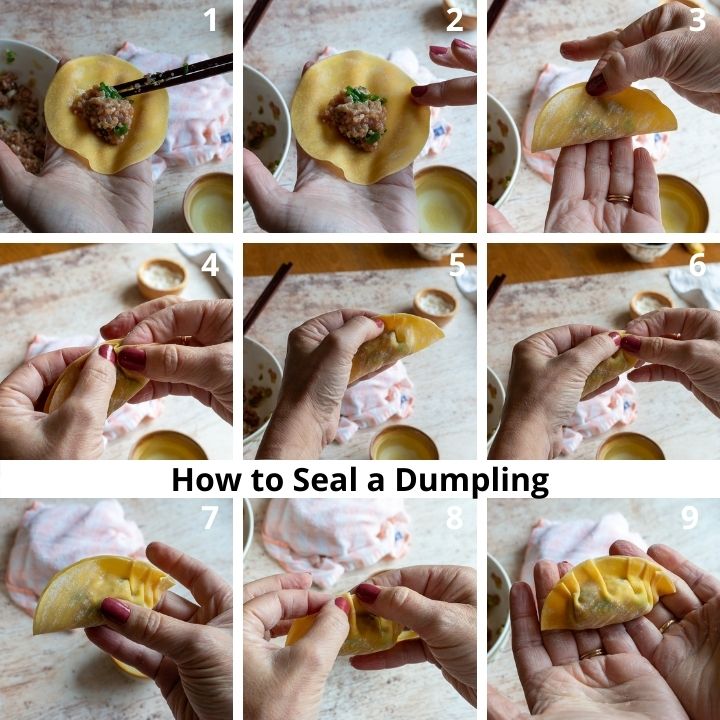
How to Wrap and Seal a Chinese Dumpling
Have you ever made homemade Chinese dumplings before? The goal is to make sure that the filling stays inside the Chinese dumpling. Any method that works for you is great. However, you do get style points if you make them look artistic. There are about 5 million different ways to wrap a jiaozi. All you need is a little water as the glue, and you are good to go. Another important hack is to keep your Chinese dumpling wrappers either sealed or under a damp tea cloth while making them, so they do not dry out. If your jiaozi wrappers dry out, they will crack and not seal properly.
Please check out our infographic above and video below that show you two different ways to seal a Chinese dumpling. The way we were taught is 3 folds inward on each side. However, the males in the family do this crimp and crunch freestyle method that also works well to seal the dumplings.
- Take the frozen jiaozi wrappers out of the freezer and let come to room temperature about 10 minutes before time to wrap up dumplings. (Keep jiaozi in package or under damp towel so they do not dry out)
- Take 1 Jiaozi wrapper from pack and lay flat on your hand.
- Wet your fingertips with water and run your fingers on the outside of wrapper all the way around (This is to help the wrapper stick so that it stays together during the cooking process)
- Place about 1 teaspoon of either the pork filling or vegetable filling in the center of wrapper (Less is more in this situation as if too full then jiaozi will not stay sealed)
- Fold jiaozi in half like a half moon and crimp.
- Then start at one side and fold the jiaozi wrapper inwards and towards the center and crimp.
- Repeat process by staying on the same side and fold the jiaozi wrapper inwards and towards the center and crimp. Repeat 2-3 times on each side. (FYI: there are many ways to secure these little jiaozi. As long as the jiaozi stays together during the cooking process the “HOW” you get it to look and stay together are all personal preferences). However, you get style points if your dumplings are cute and symmetrical.
- Set jiaozi aside with a damp towel over if going to use immediately or if freezing dumplings put on a floured baking pan and place in freezer for about an hour until set and then you can transfer to a large sealable baggie and use at another time within the next 2 months.
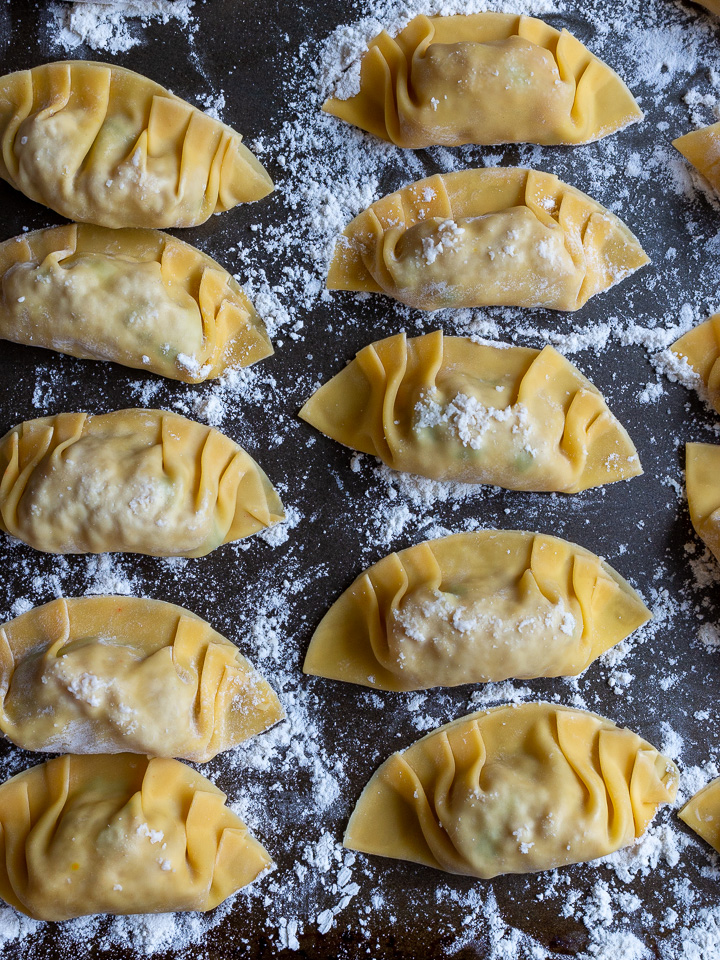
How to Cook Jiaozi?
Chinese dumplings (jiaozi) are divided into various types, depending on how they are cooked.
Boiled Dumplings are called shuǐjiǎo (水饺) which translates as water dumplings. Boiled dumplings have less fat and are a bit healthier to start out the new year. In addition, the boiled version is the most common ways it is served at home in China. The boiled method is our favorite ways to eat dumplings as it leaves the wrappers soft and silky with a tender filling. More importantly it cuts down on the grease and the cleanup mess in the kitchen. You gotta love that.
Shallow fried dumplings (potstickers) are called Jian Jiao (煎饺) or Guo Tie (锅贴) is a method by which you Fry – Steam – Fry your dumplings. This method is most common in the west. This method leaves one side of the jiaozi crispy and brown and the other side soft and succulent.
Steamed dumplings are called zhēngjiǎo (蒸饺). Steaming is the least common method for cooking Chinese dumplings, but it is also very delicious. It is a method by which you use a steamer basket on top of boiling water to cook the jiaozi. One of our favorite steamed dim sum recipes is Shrimp and Pork Shumai from Silk Road Recipes.
Today we are going to discuss and demonstrate the two most methods for cooking Homemade Chinese Dumplings (Jiaozi 饺子) boiling and pan-frying.
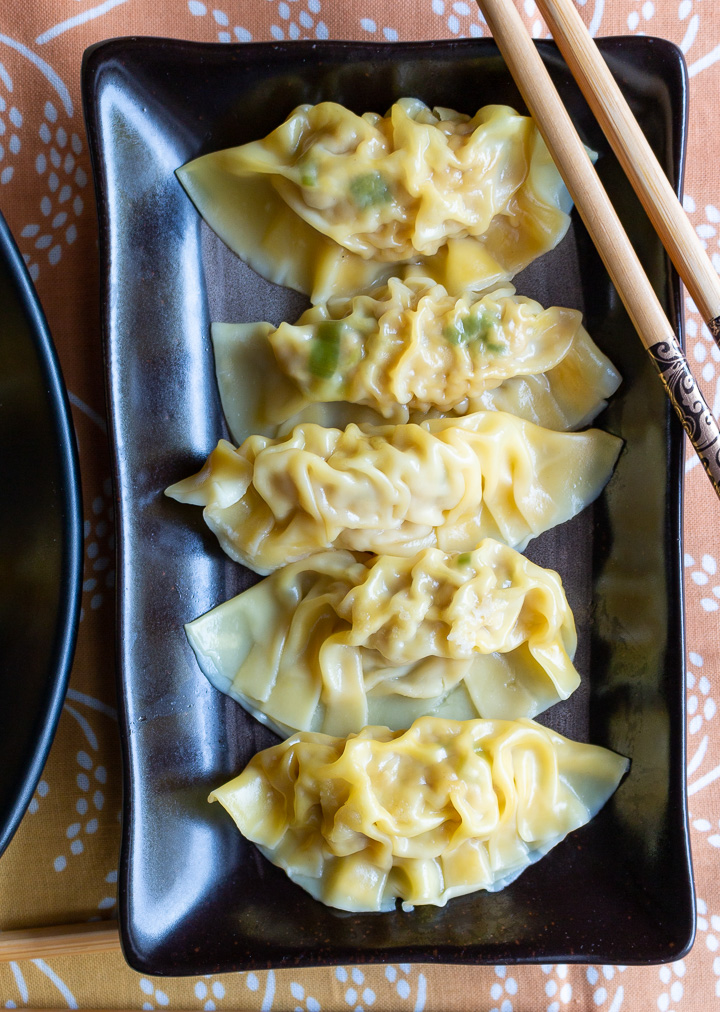
How to Cook Boiled Jiaozi
- Boil water in large pot (if you wish to salt your water you can or add a little oil in the water to prevent sticking you can)
- Carefully drop dumplings in water with slotted spoon (place burner on medium high heat).
- For fresh dumplings allow the dumplings to come up to a full boil and then add one glass of cold water as this brings down the temperature of the water but still allows them to cook more gently.(Perform this step 2 times for fresh dumplings – allow dumplings to come to full boil and then add one cup of cold water)
- For frozen dumplings perform the same procedure but allow the dumpling to come up to a full boil for 3 times and add a cup of cold water after each boil as frozen takes a little longer to cook. (Add one cup of cold water after dumplings come to a full boil. Do this 3 times for frozen dumplings)
- This is a very important step as if you let the dumpling boil hard for 5 minutes straight without letting the temperature of the water reduce it will cause the wrappers and fillings to separate and you will have broken dumplings. This step or process will take about five minutes and the dumplings will float up to the top when cooked. (Practical Advice by Lynn Li- seasoned guru jiaozi maker)
- With a slotted spoon take out dumplings and drain and place on plate and serve immediately with dipping sauces as desired. If you allow your dumplings to sit for long periods of time they will stick to the plate. Adding a little of oil to your water you are boiling, helps prevent the dumplings from sticking together.
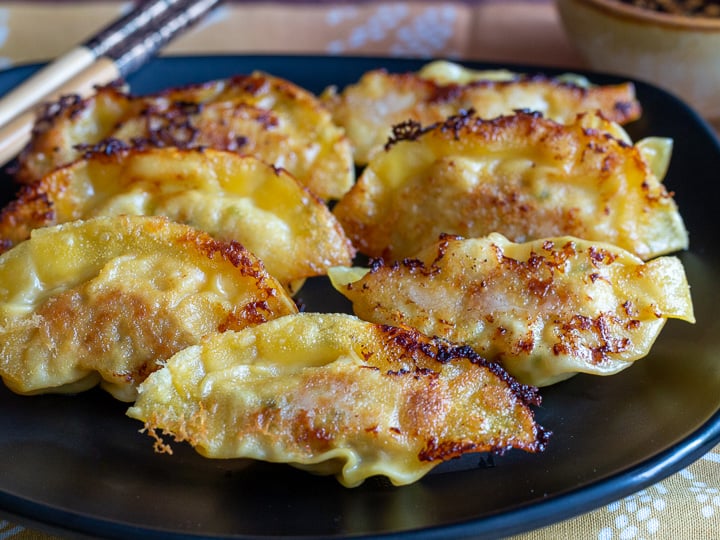
How to Cook Pan - Fried Pot Stickers (FRY- STEAM - FRY)
- Add light tasting oil to a frying pan to medium high heat.
- Add your Homemade Chinese Dumplings (Jiaozi 饺子) to the pan with the flat side down and the crimp side upright and FRY for about 2 minutes or until the bottom is golden brown.
- Next add water to cover about ⅓ way up the pot stickers in the pan. Cover and STEAM pot stickers for about 4-5 minutes or until the water evaporates from the pan. If your jiaozi are frozen, this step may take a little longer to cook.
- Finally, remove lid from pan and FRY one more time for about another minute to crisp up.
- Enjoy with your dipping sauce
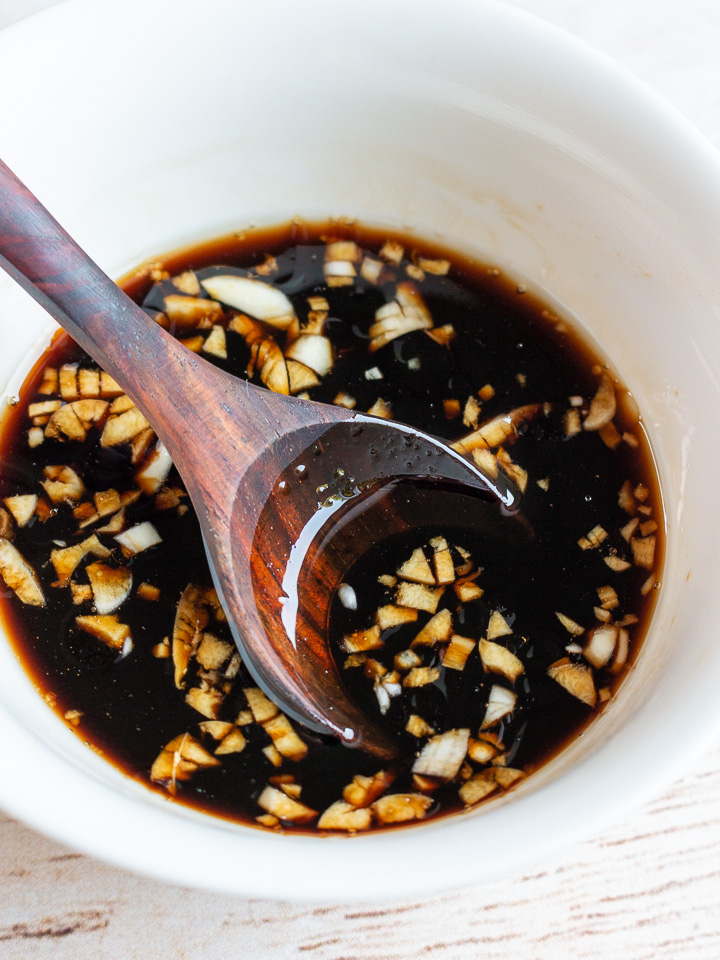
Killer Good Dipping Sauce
The dipping sauce is super simple to make with just 4 ingredients, but you get and explosion of flavor with each bite. If you want to add a little heat, be sure to try a little drizzle of chili oil to the mix.
- Soy Sauce – savory notes
- Chinese Black Vinegar (Chinkiang) has a malty, woody, and smoky flavor that is very unique. If you need to make this recipe gluten-free, you can exchange the Chinkiang vinegar with ratio of 1:1 balsamic vinegar and rice vinegar. It is not perfect but the closest we have found for an exchange.
- Sesame oil
- Garlic – but of course!
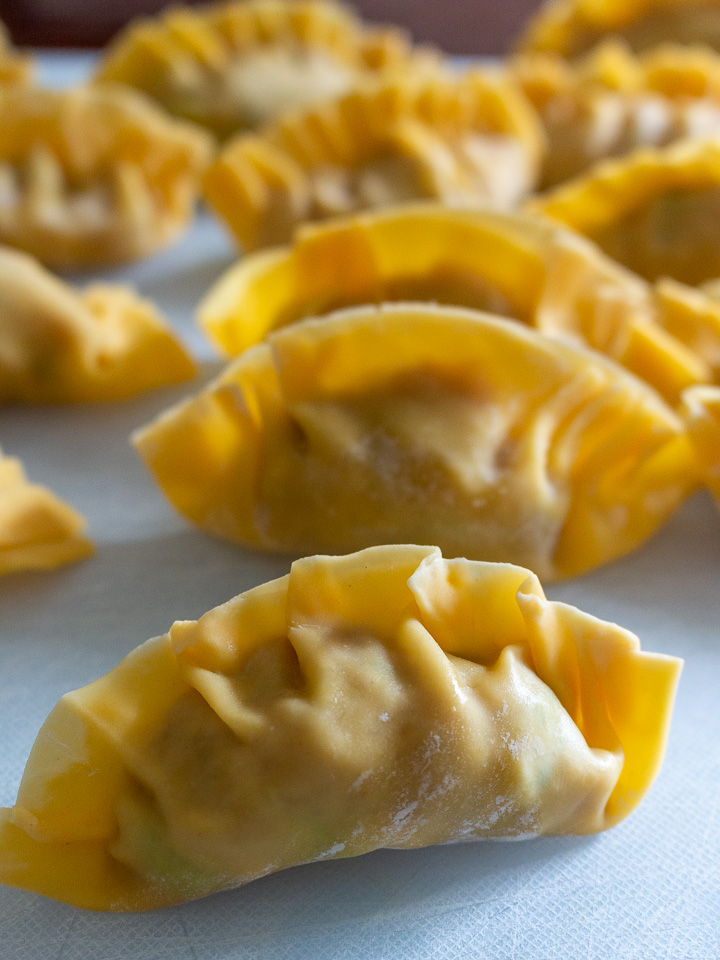
How to Store Chinese Dumplings
The best way to store Chinese dumplings is in the freezer BEFORE you cook them. We like to line a baking tray with a little flour or a sheet of waxed paper and place the freshly sealed jiaozi on top. Please make sure that the dumplings are not touching as they will stick together.
Put the entire baking tray leveled and uncovered in the freezer for an hour or 2 or until jiaozi are frozen solid. Then, take the frozen dumplings and place in a freezer bag or freezer safe container for up to 2 months. Make sure you remove all the air out of the bag before placing in the freezer. If your jiaozi get a little hairline crack in them here or there, do not panic. Generally speaking these little hairline cracks will seal during the steaming process.
Do not store prepared uncooked jiaozi in the refrigerator. Otherwise they will get soggy from the marinated filling and they may burst open during the cooking process. It is best to either freeze your jiaozi or cook the jiaozi and heat and eat later.
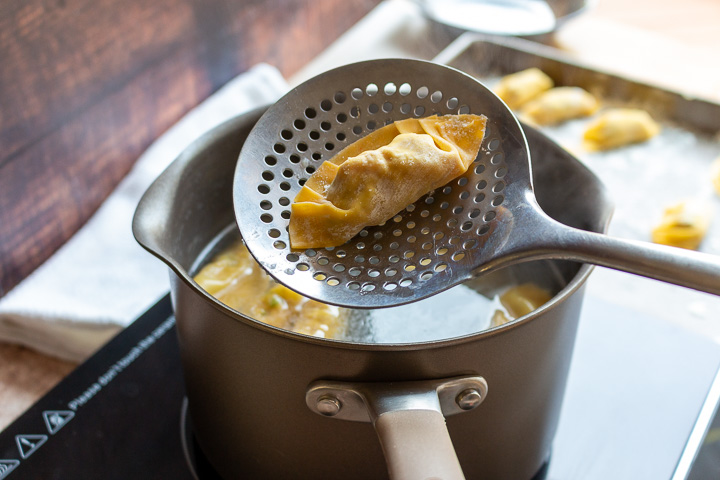
How to Cook Frozen Chinese Dumplings
Do NOT thaw out the frozen dumplings before cooking. You will cook them from their frozen state. The process of cooking fresh and frozen jiaozi is the exactly the same. Except, frozen dumplings take a little longer to cook.
For example, when boiling jiaozi, you will allow the FROZEN dumplings to come up to a boil three times before adding cool water, instead of two for fresh dumplings. When pan-frying pot stickers, it may take between 2-4 minutes to fry and 5-8 minutes to steam before frying again. Once again, it is just a little more time, but the method remains the same.
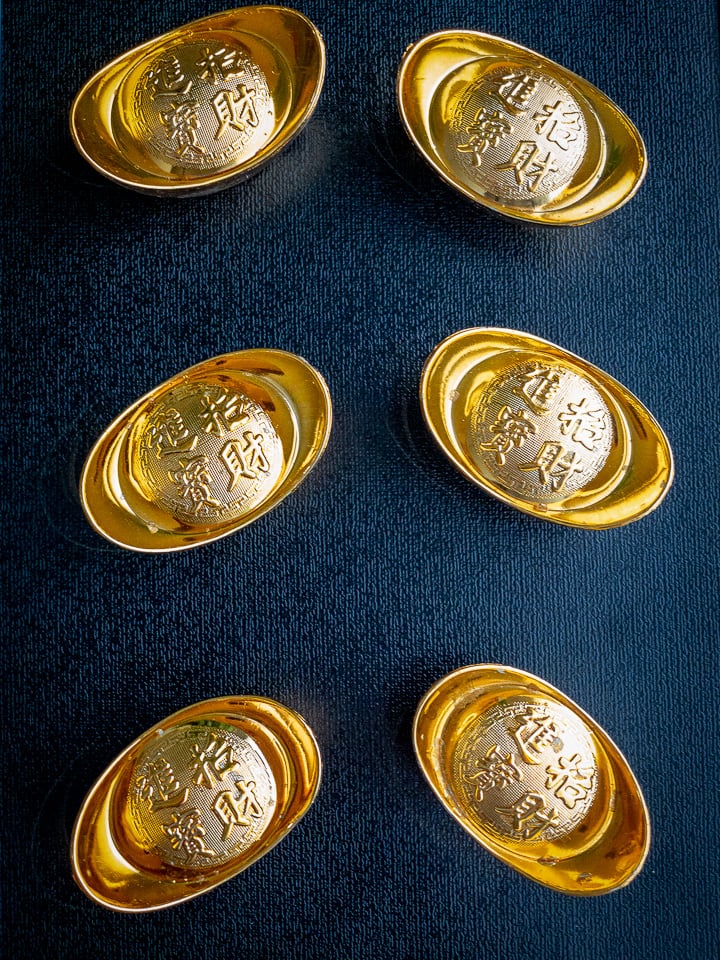
When are Jiaozi eaten?
Jiaozi are eaten all year round and can be eaten at any time of the day. They can constitute one course, starter or side dish, or the main meal. In addition, Homemade Chinese Dumplings (Jiaozi 饺子) are usually enjoyed as part of the Chinese New Year Celebrations with family and friends.
Did you know that Chinese dumplings are the exact size and shape of the small gold ingots (blocks of gold) that were used for money in ancient China? Therefore, many eat jiaozi to signify bringing wealth and abundance in the new year. (Wish those pictured below were REAL gold but those are only plastic chopstick holders – AKA food photography props).
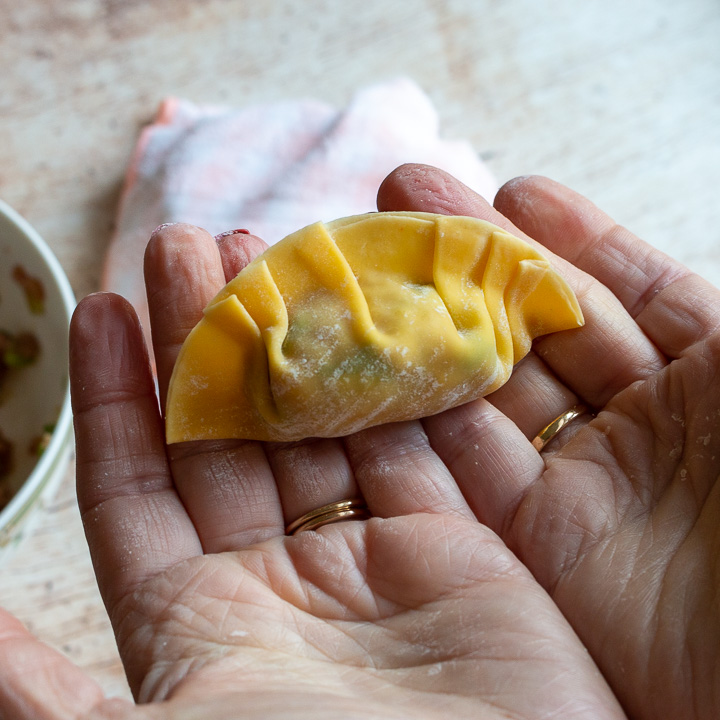
History of Chinese Dumplings
According to a legend, during the Eastern Han era (AD 25–220), a Traditional Chinese Medicine doctor named Zhang Zhongjing introduced dumplings as a way to cure frostbite. Many people were suffering from a febrile epidemic and times were hard. Many did not have food, shelter or a way to stay warm. Zhang Zhongjing noticed that the frostbite was more prominent around his patient’s ears.
In attempt to solve this problem, he wrapped warming foods like lamb, black pepper and herbs into a dough wrapper and boiled it in a soup and served each person two dumplings shaped as ears. After serving his dumpling soup to the ill for several days, the frostbite and epidemic was under control. If you want to learn more about Traditional Chinese Medicine and warming and cooling foods, be sure to read our article, Introducing the Five Energies of Food.
Now, jiaozi is enjoyed all times of the year and especially during celebrate Chinese New Year.
Homemade Chinese dumplings is a tasty tradition that is passed on from generation to generation.
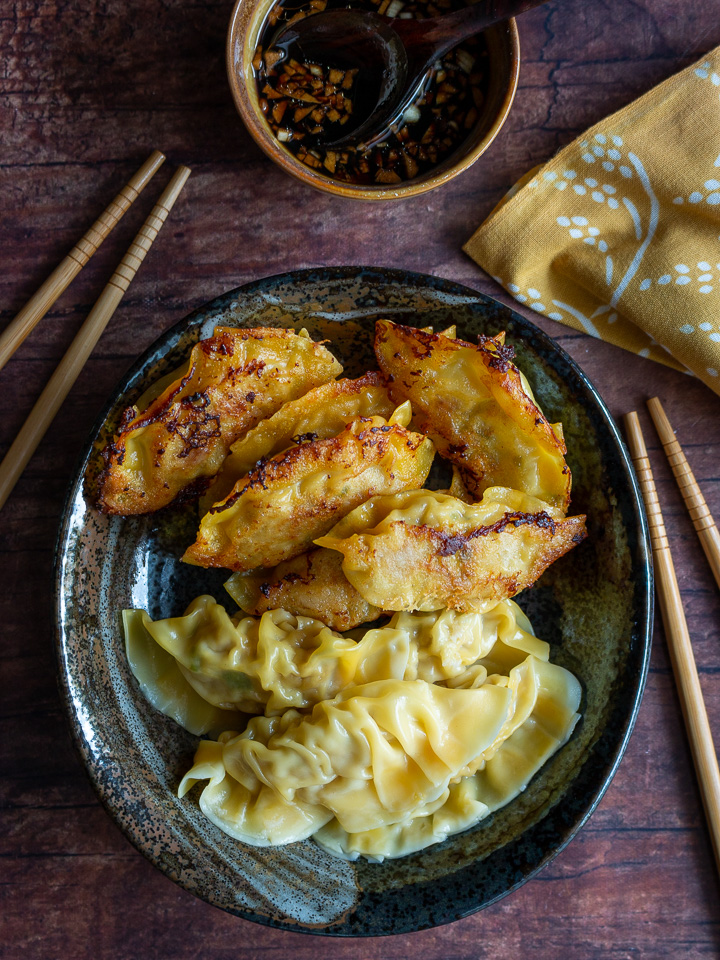
Frequent Asked Questions (FAQ’s)
The Chinese dumpling (pot stickers) have been around for centuries whereas the Japanese gyoza is a rather new invention that came about in World War II. When the Japanese were in Manchuria during the war, they were exposed to this delicious treat and did their own spin on the dumpling. The differences gyoza and jiaozi are very subtle and both are very delicious!
Gyoza - Japanese Version of the dumplings are thinner than the Chinese jiaozi recipe and are usually 1-2 bites. It is more about the inner filling than the wrapper. Generally speaking, these gyoza are usually pan fried like a pot sticker.
Jiaozi - Chinese Version dumplings are usually either boiled, steamed or pan fried. Generally speaking, their skin is a little thicker and a little bit bigger in diameter compared to the gyoza counterpart. This little dim sum is usually only two or three bites.
Both jiaozi wrapper styles are vegan and do not contain eggs. Traditionally a Shanghai dumpling style wrapper is used because it is thicker. However, we do not like that thick doughy texture and prefer our dumplings lighter, so we have used a Hong Kong Style wrapper for this recipe. You may use either type of wrapper to make Homemade Chinese Dumplings. We generally use Twin Marquis wrapper as they are made in the USA and can be found at Asian Food markets in the freezer section of the store.
Shanghai Style - Wheat-flour wrapper is white, thick and round shape (approximately 3.5” diameter).
Hong Kong Style - Thin, round, yellow wrapper, thinner than the Shanghai style wrappers and more delicate texture (approximately 3.5” diameter).
You can find them in the freezer section of Asian markets like H-Mart on Instacart, in the fresh wet market stalls and even at Walmart. You can also use Japanese gyoza wrappers too. Wonton wrapper are much smaller but if you are in the mood for soup, be sure to try our Shanghai Wonton Soup.
More Delicious Homemade Chinese Dim Sum Treats
Braised Orange Anise Lotus Root
Hungry For More? Subscribe to our Newsletter and follow along on Facebook, You Tube, Instagram, and Pinterest for all the latest updates.
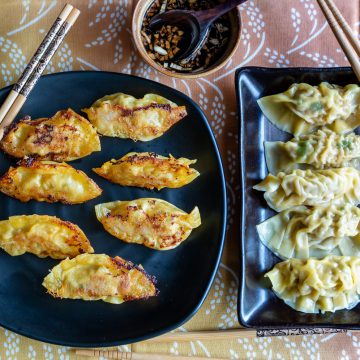
Homemade Chinese Dumplings- Jiaozi 饺子
Equipment
- baking sheet
- pot or frying pan
Ingredients
- 48 dumpling wrappers
(You can find these in the freezer section of asian store or fresh in the wet markets - round small wrapper)- In Japan these are called Gyoza wrappers and these can be used if you cannot find Jiaozi wrappers but they are a little thinner. - water to seal the dumplings
Pork filling (or Pork and Shrimp)
- 1 pound ground pork
(or ½ pound ground pork and ½ pound raw finely chopped shrimp) - ½ cup green onions
minced - 1 tablespoon ginger
freshly grated - 3 cloves garlic minced
- 2 teaspoons sesame oil
- 1 tablespoon rice vinegar
- ¼ teaspoon white pepper
or to taste - 2 tablespoons soy sauce
- salt to taste
Vegetable Filling (optional)
- ½ cup celery
finely chopped - ½ cup Carrot
finely chopped - ½ cup Chinese Napa Cabbage finely chopped
- ½ cup tofu firm finely chopped (optional)
- 2 tablespoons green onions finely chopped
- 2 cloves garlic minced
- 2 tablespoons soy sauce
- 1 tablespoon rice vinegar
- salt to taste
Dipping Sauce
- 2 tablespoons soy sauce
- 2 tablespoons Chinese Black Vinegar also known as Chinkiang vinegar
- 1 clove garlic minced
- 1 teaspoon sesame oil
Instructions
Make the Fillings
- Plain Pork or Pork and Shrimp Filling: In a medium bowl combine ingredients for pork filling (ground pork or ground pork and finely minced shrimp), scallions, ginger, garlic, sesame oil, rice vinegar, soy sauce, white pepper, and salt) and set in refrigerator for at least one hour so that flavors have a chance to mingle. We like to make dumplings with ½ pound ground pork and ½ pound raw finely minced shrimp.
- If you would like to make the vegetable dumplings mix the celery, carrots, cabbage, tofu, garlic, ginger, scallions, sesame oil, rice vinegar, soy sauce, white pepper and salt together and set in refrigerator for at least one hour so that flavors have a chance to mingle.
- Take the frozen jiaozi wrappers out of the freezer and let come to room temperature about 10 minutes before time to wrap up dumplings. (Keep jiaozi in package or under damp towel so they do not dry out)
Seal and crimp Chinese dumplings
- Take 1 Jiaozi wrapper from pack and lay flat on your hand.
- Wet your finger tips with water and run your fingers on the outside of wrapper all the way around (This is to help the wrapper stick so that it stays together during the cooking process)
- Place about 1 teaspoon of either the pork filling or vegetable filling in the center of wrapper (Less is more in this situation as if too full then jiaozi will not stay sealed)
- Fold jiaozi in half like a half moon and crimp.
- Then start at one side and fold the jiaozi wrapper inwards and towards to center and crimp.
- Repeat process by staying on the same side and fold the jiazi wrapper inwards and towards the center and crimp. Repeat 2-3 times on each side. (FYI: there are many ways to secure these little jiaozi. As long as the jiaozi stays together during the cooking process the "HOW" you get it to look and stay together are all personal preferences) However you get style points if your dumplings are cute and symmetrical.
- Set jiaozi aside with a damp towel over if going to use immediately or if freezing dumplings put on a floured baking pan and place in freezer for about an hour until set and then you can transfer to a large sealable baggie and use at another time within the next 2-3 months.
Boiled Chinese Dumplings (Shuijiao)
- Boil water in large pot. You may add salt to taste and a little oil to prevent sticking if you wish but not required.
- Carefully drop dumplings in water with slotted spoon (place burner on medium high heat).
- Very important : For fresh dumplings allow the dumplings to come up to a full boil and and then add one glass of cold water as this brings down the temperature of the water but still allows them to cook more gently.(Perform this step 2 times for fresh dumplings - allow dumplings to come to full boil and then add one cup of cold water) For frozen dumplings perform the same procedure but allow the dumpling to come up to a full boil for 3 times and add a cup of cold water after each boil as frozen takes a little longer to cook. (Add one cup of cold water after dumplings come to a full boil. Do this 3 times for frozen dumplings) This is a very important step as if you let the dumpling boil hard for 5 minutes straight without letting the temperature of the water reduce it will cause the wrappers and fillings to separate and you will have broken dumplings. This step or process will take about five minutes and the dumplings will float up to the top when cooked. (Advice by Lynn- seasoned jiaozi maker)
- With a slotted spoon take out dumplings and drain and place on plate and serve with dipping sauces as desired. Garnish with spring onions
Pan-Fried Pot Stickers (FRY-STEAM-FRY)
- Add 1 tablespoon light tasting oil to a frying pan to medium high heat.
- Add your Homemade Chinese Dumplings (Jiaozi 饺子)to the pan with the flat side down and the crimp side upright and FRY for about 2 minutes or until the bottom is golden brown. If your jiaozi are frozen it may take about 4 minutes to get golden brown on the bottom.
- Next add water to cover about ⅓ way up the pot stickers in the pan. Cover and STEAM pot stickers for about 4-5 minutes or until the water evaporates from the pan. If your jiaozi are frozen, this step may take a little longer to cook, maybe 5-8 minutes.
- Finally, remove lid from pan and FRY one more time for about another minute to crisp up.
Make Dipping Sauce
- Add soy sauce, Chinese black vinegar, sesame oil and minced garlic to a small bowl and mix well.
- 吃饱吃好 Eat Eat and Enjoy! Dip your boiled or pan fried homemade Chinese dumplings into the dipping sauce and enjoy!
Video
Notes
- For fresh dumplings allow the dumplings to come up to a full boil and and then add one glass of cold water as this brings down the temperature of the water but still allows them to cook more gently.(Perform this step 2 times for fresh dumplings - allow dumplings to come to full boil and then add one cup of cold water)
- For frozen dumplings perform the same procedure but allow the dumpling to come up to a full boil for 3 times and add a cup of cold water after each boil as frozen takes a little longer to cook. (Add one cup of cold water after dumplings come to a full boil. Do this 3 times for frozen dumplings)
- This is a very important step as if you let the dumpling boil hard for 5 minutes straight without letting the temperature of the water reduce it will cause the wrappers and fillings to separate and you will have broken dumplings. This step or process will take about five minutes and the dumplings will float up to the top when cooked.
- Try these homemade gluten-free dumpling wrappers
- Exchange of Chinese black vinegar of a ratio or 1:1 balsamic to rice vinegar
- Use tamari instead of soy sauce to stay gluten-free


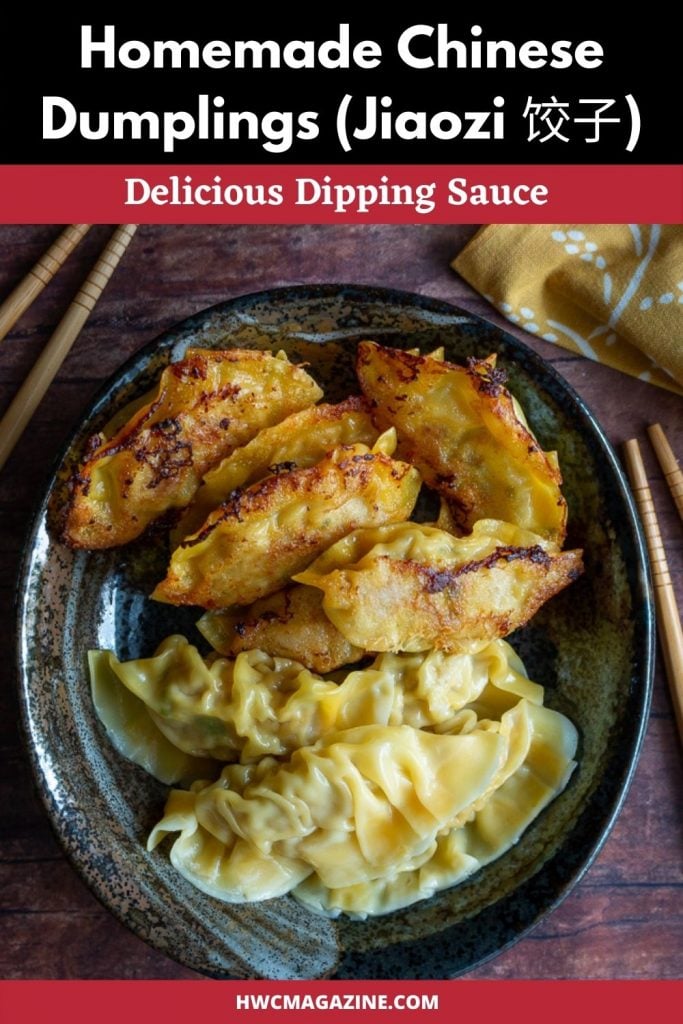
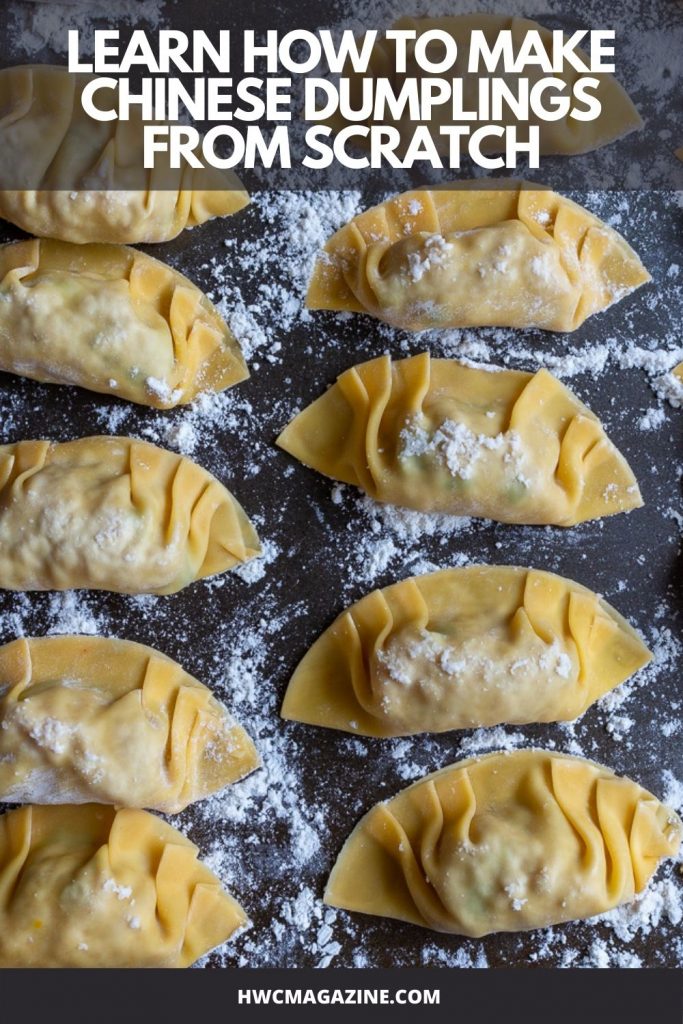


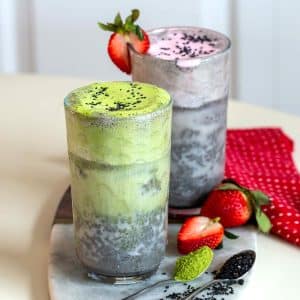
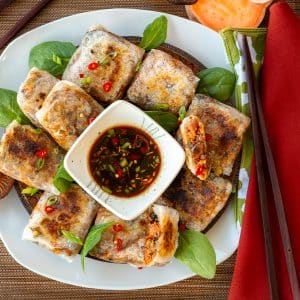

Larry says
Great recipe. I made a vegan version and used mushrooms and tofu to replace the meat.
HWC Magazine says
Thanks Larry. Your vegan version sounds fabulous. Stay well and take care
mjskitchen says
A very enjoyable and informative read! Thanks. I've always wanted to try my hand at Chinese dumplings so I appreciate your tutorial. These look like a great way to start. Haven't been able to get dim sum lately so it's time I made it at home. 🙂
HWC Magazine says
Thanks so much MJ. We hope you give it a try. It's not really hard. In the video you may have seen the males in the family demonstrate their casual seal and scrunch method. Stay well and take care
Katerina says
Yummmm! Thank you for this recipe! My daughter looooves dumplings and I love how simple these would be to make at home. I also think both kids would love helping me make these - a little bit of family bonding in the kitchen is always fun. And I love the idea of apple pie dumplings - I need to look those up next.
HWC Magazine says
Thanks so much Katerina. Your kiddos would love the apple dumpling pot stickers too. A fun Asian fusion recipe.
Aarthi | Prepbowls says
Ohhh! I can gobble them without a second thought, be it prepared anyway! Good to know about different dumpling wrappers , Love your techniques used to seal the wrapper , videos , tips , faq's are super helpful, I have learnt so much from this post, thank you!
HWC Magazine says
Thanks so much Aarthi. We are delighted this post was helpful and happy to share the tricks we have learned along the way. Dumplings are our favorite comfort food.
John / Kitchen Riffs says
Love Asian-style dumplings. I'll take them any which way -- steamed, boiled, fried -- but given a choice usually I like pot stickers. Terrific recipe and such an interesting and thorough discussion on the various types of dumpling wrappers. Thanks!
HWC Magazine says
So happy to hear John. We will make you an extra batch of pan fried dumplings just for you. Who knew there was so much to share about dumplings! Wishing you a super week ahead.
Raymund says
Those look perfect! great information om dumplings
HWC Magazine says
Thanks so much Raymund. Glad you enjoyed one of our favorite comfort meal posts.
Karen (Back Road Journal) says
I think if I was invited to sit at your table to have some of your dumplings (pan fried please), I might embarrass myself on how many I might eat...they look delicious.
HWC Magazine says
Thank you Karen. No worries we will double the batch. Come on over, we have an extra seat for you.
Hannah says
Oh, the things I would do for a plateful of these dumplings! I know they're very simple to make, but it takes such finesse to fold them properly. It truly is an art, and one that you clearly excel at. They're as beautiful as they are tasty, no doubt!
Abbe@This is How I Cook says
I think this is a SUPER FANTASTIC post! One of your best ever! I adore dumplings and make them fairly often, but I have never perfected them. I think I have the HK wrappers in the freezer right now, but I never really paid attention to the differences. I am now drooling and then I will run to the freezer and start making these! Great post Bobbi and I can't wait to try your version. Usually I put cabbage with the pork but may try just the pork now. Talk soon!
HWC Magazine says
Thanks so much Abbe. We tried to incorporate everything we know to help our readers become successful jiaozi makers. You can put anything your little heart desires inside of a wrapper. Napa cabbage with the pork is delicious.
Eha Carr says
Oh Bobbi - I did not think I had much to learn about one of my favourite foods in the world . . . how wrong !!! Let's begin with the fact I usually call them 'gyoza' and make them Shanghai style ! Hmm ! And I have always done my potstickers fry>steam>eat style altho' I guess I do not remove them immediately from the pan. I love your pleated result . . .the folds come in so prettily from both sides . . .my pleats just rush from the right to the left 🙂 ! Don't ask how many . . . .if I have gone to 'all that trouble' I'll probably indulge in eight and then look in the mirror and tell myself off . . .
HWC Magazine says
Hiya Eha! Thanks so much. Only 8 dumplings! You're a light weight... lol They do seriously go down way too easily. I bet you make beautiful gyoza's. As long as they stay glued together during the cooking process, they all taste fantastic going down. We also love adding dumplings into a spicy soup broth. Might have to share that recipe next. Stay well and take care.
Raul says
interesting history
HWC Magazine says
Hi Raul, it is, don't you think. As we are very keen on TCM, we were delighted to read how this delicious dim sum was invented as a cure. Thanks and take care
sybaritica says
Nice folding job 🙂
Jasline says
Hi Bobbi!
The jiao zi looks so yummy! I'm gonna make them soon... (: Have a nice day!
Take care,
Jasline
Bobbi Marshall says
Dear Jasline,
Thank you for your lovely comment. I am looking forward to reading what's
cooking next in Jasline's Kitchen. Take Care, Bobbi
Bobbi Marshall says
你好 Jenny, Great minds think alot! We made Jiaozi on the same day together. However, you made your wrappers from scratch so you should get bonus points for effort and your pictures are beautiful. Have you had a chance to read your e-mail? Take a look and let me know what your thoughts are. Take Care, Bobbi
Jenny liu says
Hey Bobbi, we made Jiaozi in the same day(I made it on 13th!) What a coincidence! The jiaozi you made looks so beautiful, the recipe is very easy to follow too! The dumpling fill with pork and scallions is an typical Northern china style jiaozi! very authentic recipe! have a good day! Jenny